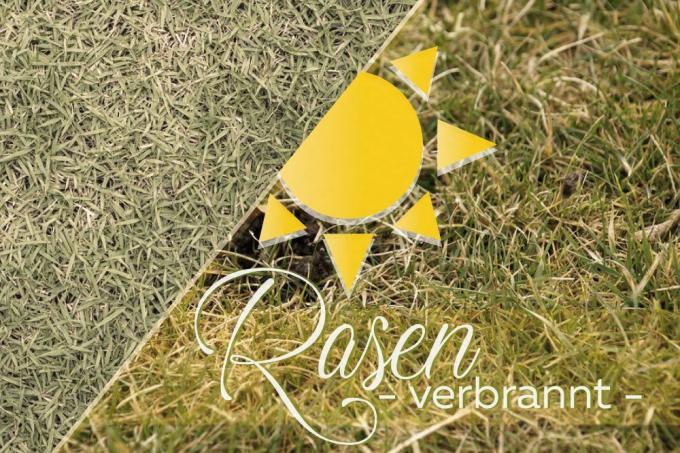
table of contents
- Damage image
- causes
- Wrong watering
- cut the lawn
- Assistance measures
- Water
- Fertilize
- Radical measures
- Prevent
Heat waves, especially in summer, don't just bother us humans. The garden also suffers from the heat and the drought that is often associated with it. And before you know it, it is race burned or dried up. But this is no reason to give up the lawn, because the grass can be saved with a pampering program.
Damage image
Damage and causes
The main cause of dried out resp. scorched lawn is often a longer one Hot spell without thunderstorms or rain, because the grass then suffers Lack of water and dries up. If the grass has turned yellow or brown, it is already well advanced. Therefore, you should pay attention to the first alarm signals from the lawn.
These are:
- curled tips of grass
- bluish discoloration of the blades of grass
- long visibility of kicks on the lawn
You should also check the edges of the lawn regularly. The first yellow spots often appear on the border with house walls, walls or the terrace. But not only the summer one
heat makes the lawn to create. Even Care errors can lead to yellow resp. lead to straw-colored spots.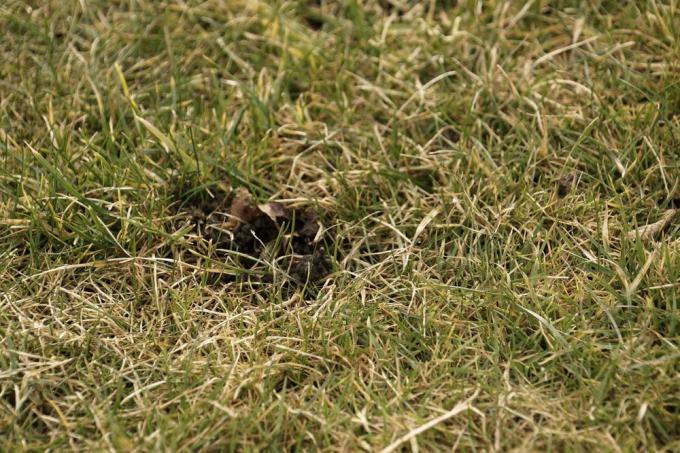
The most common care mistakes are:
- improper watering
- Mow the lawn at lunchtime
causes
Wrong watering
If it rains in summer, the grass gets too much water and turns yellow. However, this also occurs if the lawn is irrigated incorrectly during a hot period, i.e. too much artificially water receives. Here it is better to water less, but penetrate. The rule of thumb for hot spells is as follows: once or twice a week, sprinkle the lawn with around 15 to 20 liters of water per square meter.
Tip: A water clock or rain gauge will help you control the amount of water.
cut the lawn
Mow the lawn at lunchtime
Mowing the lawn in blazing sunlight on hot days at lunchtime is not only a great effort for people. Even the blades of grass have a hard time doing it, because when mowing the stalk is cut off, which means an injury for the plant to heal. If mowing is now under the blazing sun, the stalk has no chance to seal the cut, as the sun's rays damage the wound or dry out the stalk immediately. The result is brown blades of grass or brown tips.
Our advice: It is best to mow in the morning or in the evening when the sun has not yet risen or has already gone down. This gives the lawn time to seal the cuts.
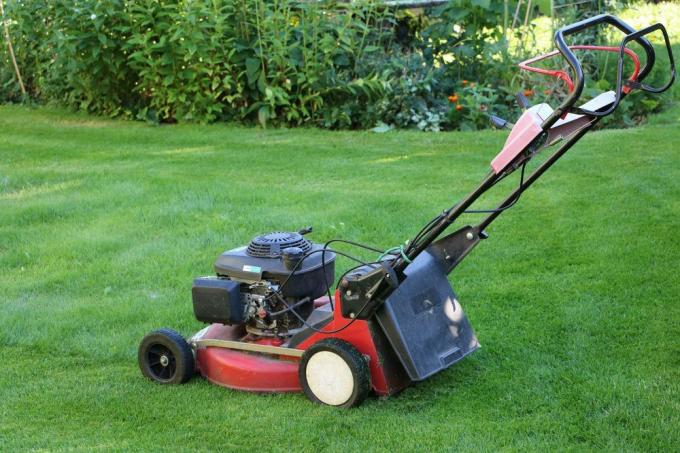
Assistance measures
Help for the lawn
Blades of grass that dry up or are burned, also remain dried up or burned. Saving the lawn aims to ensure that new, fresh, green blades of grass grow back. That is why the grass needs a special one careso that it can recover. It doesn't take a lot of effort, but it does take a little patience. So you should give the weed two to three weeks to recover before taking any radical measures.
Water
Water helps against a lack of water. However, it only helps if it is given in the right amount. Artificial heavy rain is of no use to the grass, even if it has dried up or burned. It is important that the water penetrates deep into the soil so that the roots can absorb the cool water well. One is optimal Water penetration of the floor of at least 20 centimeters.
Tip: The best way to check how many liters you actually need per square meter is to cut out a small piece of lawn after watering. So you can see how deep the water has penetrated into the ground.
At what time of day you sprinkle the lawn is controversial. In order to keep the water consumption within limits, the morning or the evening is certainly the best time of day. However, nothing speaks against one irrigation at lunchtime. It does not harm the grass per se, but a lot of water evaporates when it is sprinkled, which leads to increased costs.
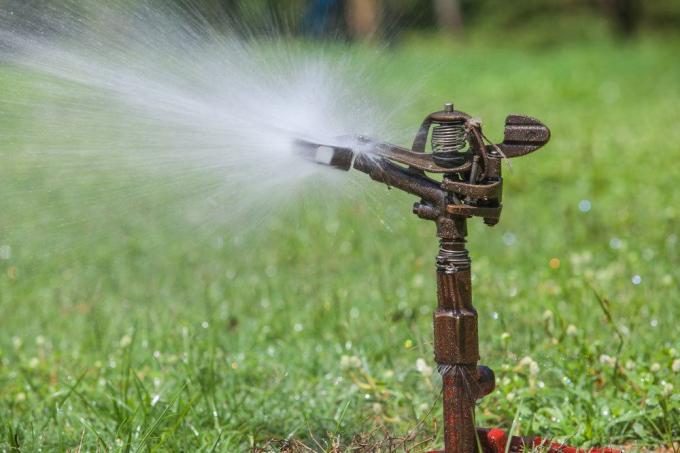
Fertilize
Water is one part of the pampering program, the addition of nutrients is the other. As a dry ground the grass almost none nutrient be sure to fertilize it.
Tip: Ask your specialist dealer which fertilizer is best if your lawn is dried out or burned, because not every fertilizer is suitable for this case.
As with watering, the right fertilizer must also be used dosage be respected. Because "too much" is the wrong way to go here too. If the soil is over-fertilized, even if you mean it well, the grass cannot recover. And no fresh stalks grow back either. In addition, with some varieties, if the soil is over-fertilized, the grass can burn. To ensure that the soil is not over-fertilized, follow the instructions on the fertilizer package exactly.
Tip: So that the fertilizing really helps, i.e. the fertilizer also gets into the soil, you should water or irrigate the lawn after fertilizing. fertilize before watering.
Radical measures
If no new green can be found on the lawn after fertilizing and watering after two to three weeks, radical measures can be used to make it green again.
Overseeding
Reseeding is recommended if the lawn is only burned in places. It not only closes the dry areas, but also serves to keep the spread of weeds as low as possible.
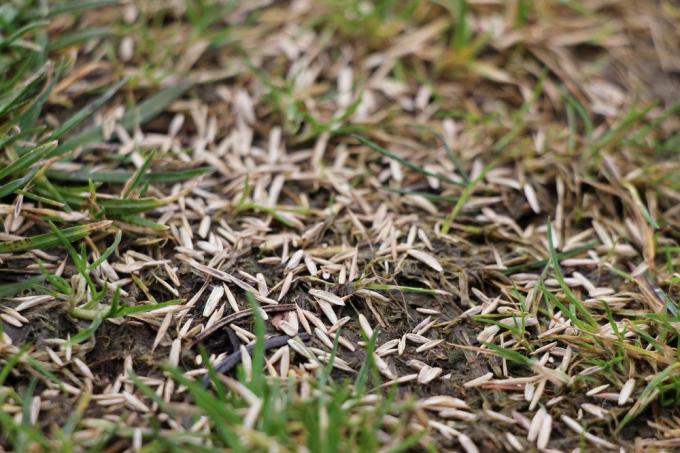
Verticulate
When verticulating, the dead plants are removed from the ground. If there is still old grass on the area, it is cut off in advance on the lowest level of the lawnmower and disposed of on the compost.
For the actual verticulation, proceed as follows:
- Set the verticulator as low as possible
- Pull the tracks lengthways and crossways several times
If the lawn looks like a field, you can adjust the verticulation. Then proceed as follows.
- Distribute starter fertilizer and lawn mixture evenly over the area
- Possibly. press the seeds into the ground with wooden boards strapped to their feet
- Cover the area with peat (maximum one centimeter)
Water
Since the seedlings do not develop roots in the first month, they have to be supplied with water every day. You can then reduce the water supply, as the young blades of grass can now take care of themselves through their roots.
Tip: After using the starter fertilizer, you should not re-fertilize the lawn area immediately, otherwise the "burned" problem will reappear.
Prevent
Preventive measures
In addition to proper watering, there are preventive measures you can take to keep your lawn from drying out in the first place.
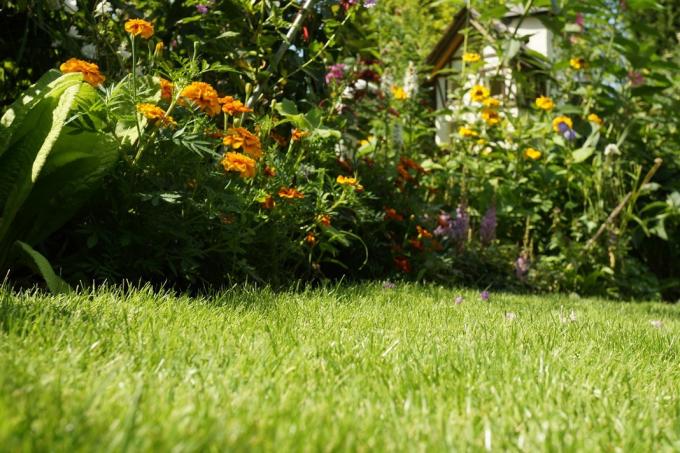
Educate the lawn
So that the grass has a heat resp. Withstands drought well, you can “educate” it. This means that the stalks develop long roots. Because with long roots, the plants reach deeper soil layers that provide them with water for longer.
Tip: If the lawn is watered too often, even daily, with just a little water, the roots will remain flat and the lawn will dry out in the heat or when it is hot. Drought out fast.
Cutting length
Keeping the lawn short is important for many hobby gardeners. However, if the grass is cut too short, it suffers a lot from the sun's rays in summer. Therefore, it should not be cut below five centimeters in the summer months.
Grass mixtures
In regions where rain is usually sparse in summer, drought-tolerant grass mixtures help to avert the greatest damage.



